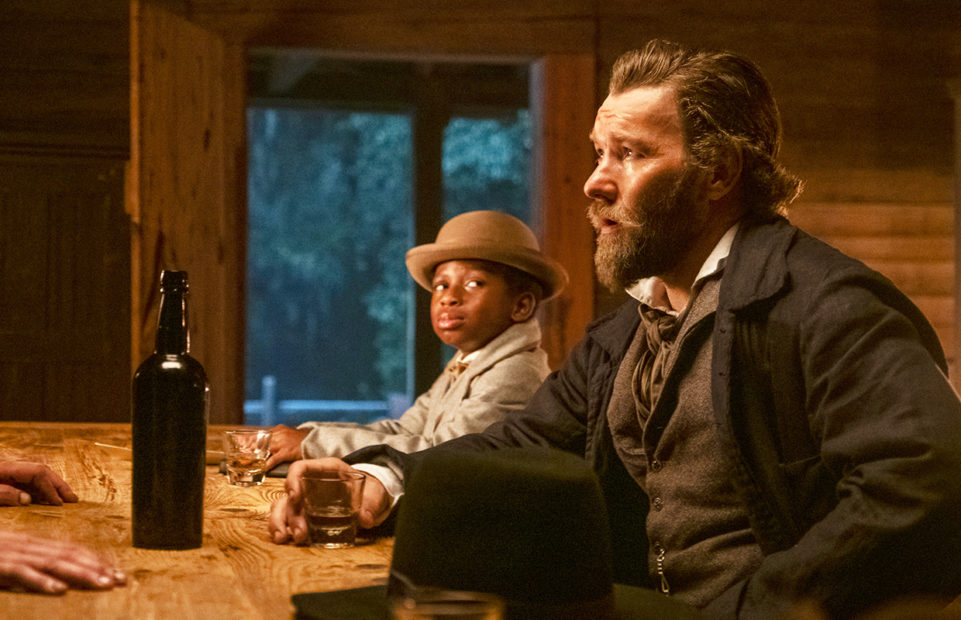African-American author Colson Whitehead and film director Barry Jenkins both made the same mistake when they were children and first heard about the Underground Railroad. The historical Underground Railroad was a network of people who helped slaves escape from the American South to freedom in the northern states or Canada. Both Whitehead and Jenkins pictured as real trains travelling under the southern states to freedom.
Whitehead went on to use the idea in his novel The Underground Railroad, which won the 2017 Pulitzer Prize. And Jenkins (Best Director Oscar for Moonlight) has just adapted the novel into a 10-part series for Amazon.
The fantastical element of the underground steam trains contrasts with the very real horror of life as a plantation slave. Whitehead listened to hours of audio recordings of former slaves and used real newspaper adverts where owners offered rewards for the return of runaway slaves.

The story is focussed on Cora Randall, who suffers brutal treatment and punishment on a Georgia plantation in the 19th century. She decides to run away with another slave Caesar, even though the consequences would be awful if they were caught. During her odyssey Cora takes the Underground Railroad, discovers a prosperous black community and a state where (fictionally) black people, free or slaves, are illegal. She hides out for months in an abolitionist’s attic and meets many other abolitionists, free and slave African Americans on the way.

All the time she is chased by Ridgeway, a bounty hunter who wants to take her back to the plantation to win a reward. The story is set around the time of the 1850 Fugitive Slave Act, which toughened existing laws that meant former slaves were still in danger even in the non-slave northern states. The Act imposed heavy penalties on those who helped fugitive slaves, or federal marshals (the equivalent of the police) who didn’t act to catch them.

Perhaps it needs a bit of fantasy to make a narrative of slavery bearable for modern viewers. Barry Jenkins says, “For me, this show is a return to that feeling with the eyes of an adult in place of the innocence of a child, a memory of conjuring soft images where hard ones were stricken from the record, hidden from view. This balancing act, the tension between hard and soft images, the need to tell the truth without being devoured by the barbarity of that truth, is without question the hardest undertaking I have ever attempted in my creative life.”
Harriet Tubman
Meantime, the long-planned commemoration of the historic Underground Railroad’s most famous conductor, Harriet Tubman, seems to be back on track. Tubman escaped slavery but then repeatedly returned to help free other slaves. She won a vote to choose a woman to honour on the $50 bill but the plan was stalled by the Trump administration. President Biden has asked for it to be speeded up.
This article from the Smithsonian Magazine gives more information about the real Underground Railroad versus Colson Whitehead’s version.
Give me five! 4e Unit 5 "Journey to Freedom" focuses on Harriet Tubman and the Underground Railroad. Download a sample page here.
There is an extract from Whitehead's novel in Shine Bright 2e File 19 Breaking the Chains, as well as a video on the Underground Railroad and an article on Harriet Tubman.
Copyright(s) :
Amazon Studios, Kyle Kaplan and Atsushi Nishijima
> The Face of Money: U.S. Banknotes Get a New Look
Tag(s) : "African American" "civil rights" "Colson Whitehead" "dollars" "Give Me Five 4e" "Harriet Tubman" "Pulitzer Prize" "Shine bright 2e" "U.S. culture" "U.S. history" "U.S. literature" "Underground Railroad"






